“What? The LinkedIn platform is designed to LIMIT content from going viral ?!!” ….is the response some might have to learning more about the LinkedIn Algorithm.
Understanding the algorithm is now a really important part of crafting the right content and raising your post visibility on Linkedin.
It’s a key part of my Linkedin Content module in training sessions, where we explore and understand the in-built factors that majorly influence the performance of your LinkedIn Posts. And that tailoring your content to reflect these factors – will have a very beneficial impact on your visibility and engagement.

In my latest Blog, I’ve set out the key elements of the LinkedIn Algorithm – and how to make it work for you – including:
- How the LinkedIn Algorithm Works: Key Factors
- Making the algorithm work for you !
- Examples of post with higher visibility and engagement
BEFORE WE DIVE INTO THE ALGORITHM
The Algorithm is important , but don’t be a slave to it . It’s perfectly normal to have some posts perform better than others.
Just like any business or marketing strategy – think about your audiences and how you can match their professional needs with your experience and knowledge
In the second half of the Blog – we’ll explore more on improving the quality and relevance of your content.
And remember – we learn by experience. So it’s important to test different types of content to identify a style of theme that really resonates with your connections.
HOW THE LINKEDIN ALGORITHM WORKS: KEY FACTORS
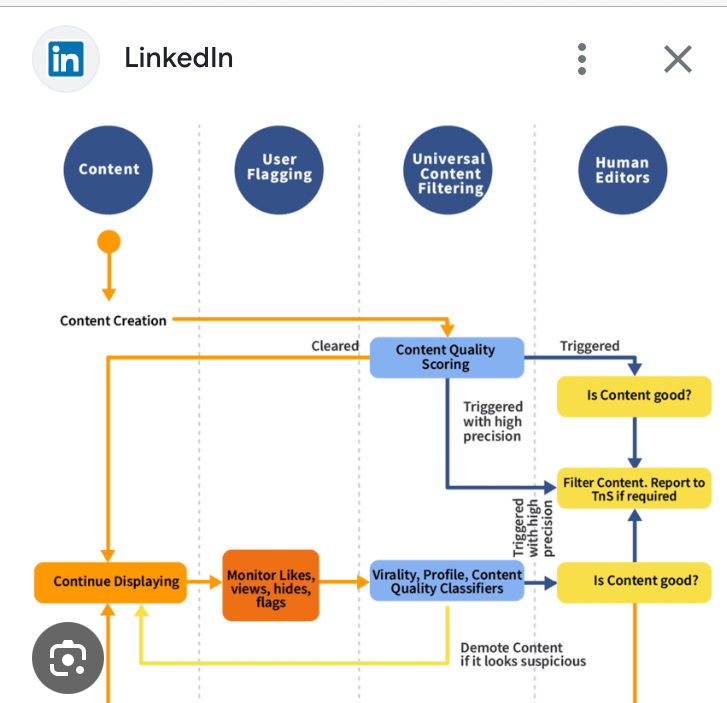
Grading Content : Spam or Not
As soon as you post to Linkedin , the content is rapidly assessed by a (mainly) AI process to decide how it should be shown to other users on the platform.
LinkedIn decides if your post is spam or good content:
LinkedIn’s algorithm is designed to maintain the quality of the platform, so posts are assessed for spam. Red flags that indicate lower quality posts that may be spam are:
- Emoji polls
- Chain letters
- Posts that excessively request likes, reactions or shares
- Posts that violate community guidelines
Then LinkedIn puts your post to the test:
LinkedIn scans posts for engagement signals (Likes, relevant comments and shares) to determine how valuable your post is to people within your immediate connection network (mainly first-degree connections). The algorithm has also been refined to ensure your first-degree connections see more of your content.
Content Quality and Performance:
Linkedin also wants to serve relevant content to specific users based on how well it’s performing with other LinkedIn users. Key factors include :
- How often the content has been viewed and engaged with by other users
- Content shares knowledge or professional advice
- Mentions of companies, people, and also topics
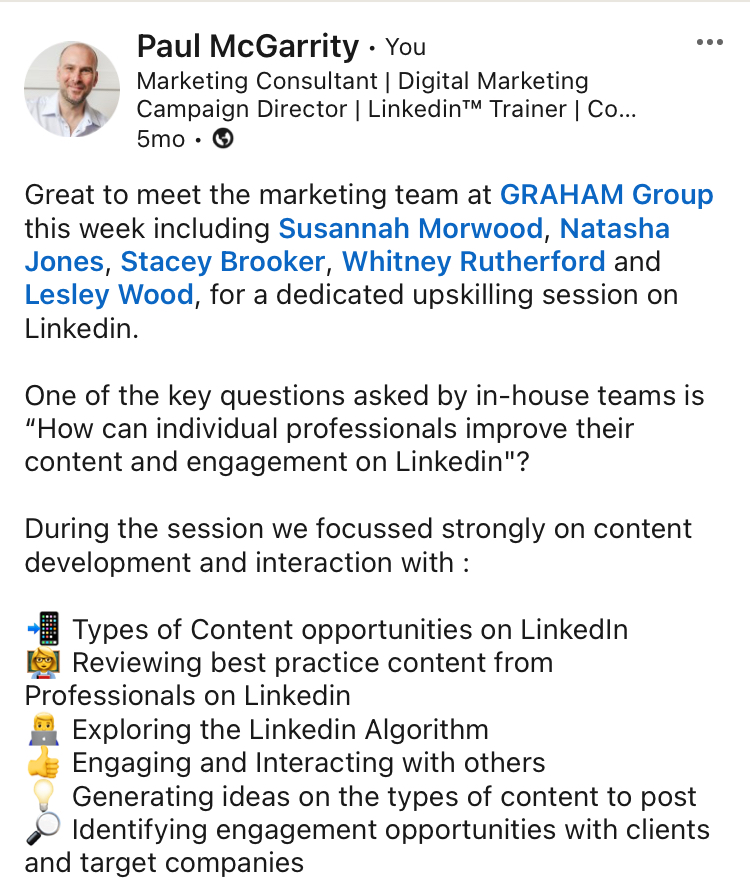
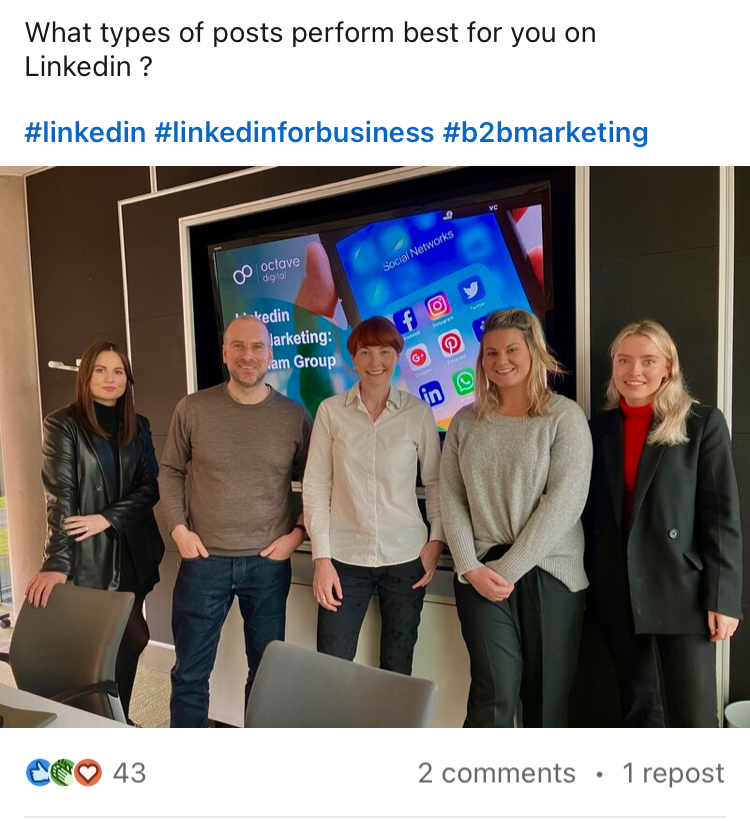
MAKING THE ALGORITHM WORK FOR YOU!
So how do you translate this into improving the quality and relevance of content?
First , you need to start with mapping out the key content themes and opportunities that match with your professional expertise.
Say for instance, you are a HR Manager focused on Recruitment and Onboarding – you could develop content based on some of the following areas :
- Making the Interview Process Less Daunting: By giving valuable insights into how Recruitment teams operate a process … and how people can improve their job hunting and interview performance.
- Insights: Showcasing how your company fosters a great working environment -including work /life balance, staff investment, mentoring programmes etc – and talking about your role in developing these.
- Events: Industry events are a great opportunity for you to mix two key themes that should perform well for engaging connections (1) Industry learning + sharing knowledge , (2) social activity – inc tagging and event photos
Content Development
- Share valuable expertise that’s relevant to your connections
- Originality: Create and develop posts that have a unique take on an issue or trend
- Encourage authentic engagements – such as asking questions about the Post topic
- Engagement Fuel: Posts will perform better if people are engaging (commenting etc ) with the post – especially in the first of hour of publishing
- Avoid Poor Posts: Flat, boring or salesy posts will harm your reputation on LinkedIn in more ways than one. The more people engage with your posts , the more likely LinkedIn are to prioritise your content. Just like Meta (Facebook and Instagram), LinkedIn will penalise content from Pages and Profiles that consistently fail to connect with people.
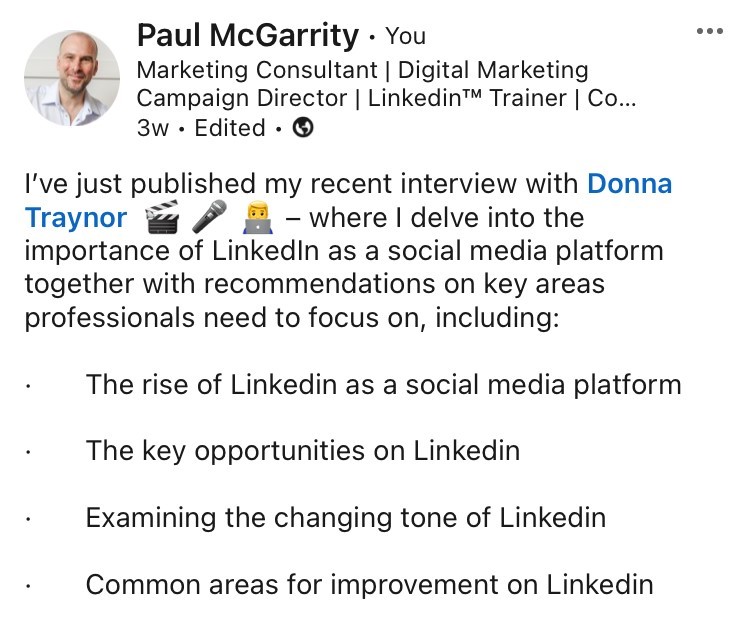
Key Tactics
Next, let’s look closer at the main tactics – including Do’s and Don’ts – when actually posting
- Formatting: Format your post so that it is easy for people to read! Avoid posting large paragraphs of text. I like to split up my post into single or double sentences – to make it easier to read. (and this is another factor in the Linkedin algorithm!)
- Don’t overuse outbound links in Posts: just like most other social media platforms, your aim should be to keep people engaged on your content on the Platform.
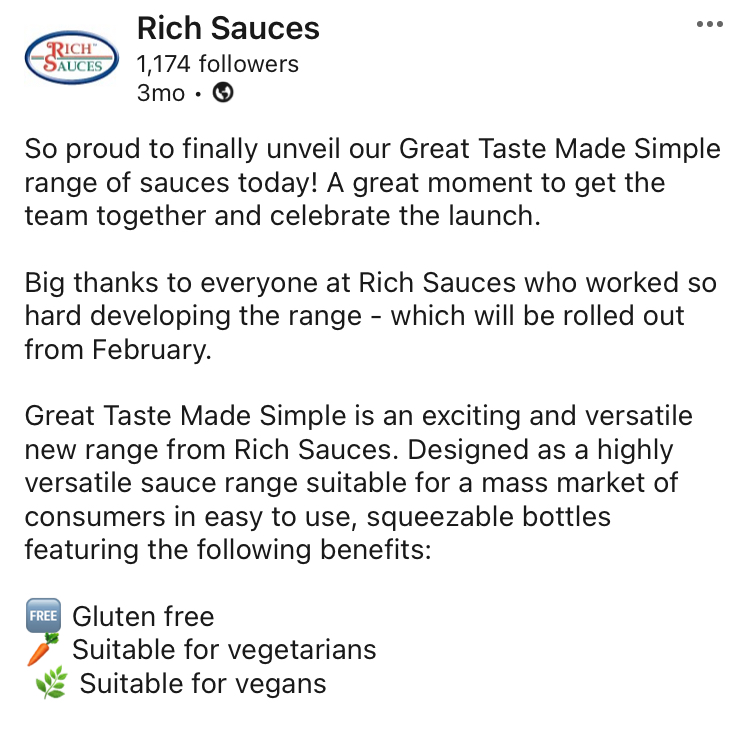

Metrics: What counts as a Successful Post
Broadly speaking you should concentrate on gaining engagement – likes, comments and shares- from your audiences
And Finally ….
Test and Learn: By testing different styles and themes – you’ll get to see which type of content is performing best. And you can learn from that..
Be Social and Relatable ! As I say during my training sessions ‘The clue is in the name – it’s SOCIAL media. Showing a relatable, social and friendly side of you – especially with good quality photos or video – will perform very effectively with your connections.
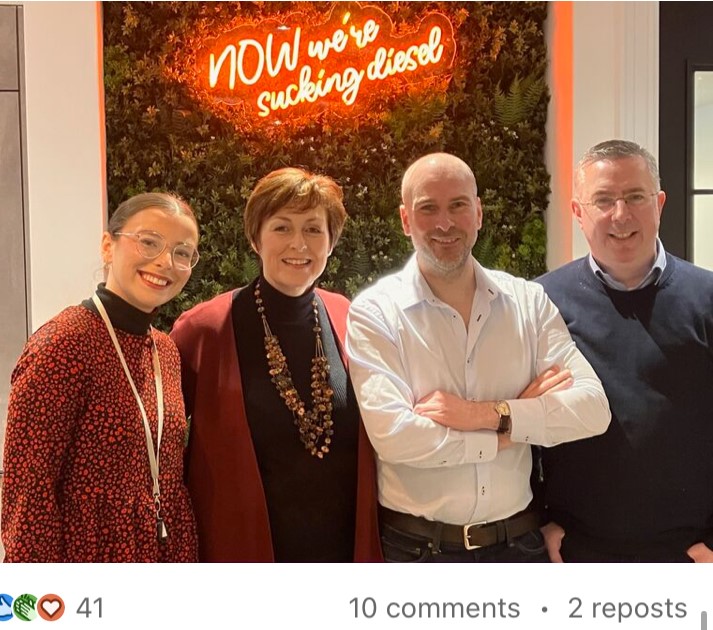
Paul McGarrity
http://www.linkedin.com/in/paulmcgarrity
